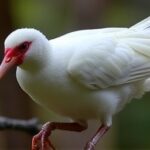In a shocking public health milestone, a man in his 50s from the Puget Sound area outside Seattle, Washington, has died from severe complications of H5N5 bird flu, marking the first known human infection and death from this avian influenza strain in the United States. The Washington State Department of Health confirmed the fatality on Friday, sending ripples of concern through health officials, poultry farmers, and communities nationwide.
The patient was hospitalized earlier this week after experiencing acute respiratory distress and multi-organ failure, symptoms consistent with severe bird flu cases observed globally. Despite aggressive treatment at a Seattle-area medical center, he passed away on Thursday evening. Authorities are now racing to identify the source of exposure while reassuring the public that the risk to the general population remains low.
Patient’s Sudden Illness Sparks Urgent Investigation
The unnamed resident, described by local officials as a backyard poultry enthusiast living in King County just east of Seattle, first sought medical attention on Monday complaining of fever, cough, and extreme fatigue. Within 24 hours, his condition deteriorated rapidly, leading to intubation and transfer to the intensive care unit.
“This was an unusually aggressive presentation,” said Dr. Maria Gonzalez, chief infectious disease specialist at the hospital. “The H5N5 virus triggered a cytokine storm, overwhelming his immune system in a matter of days.” Preliminary tests confirmed the presence of the virus through PCR assays, with genomic sequencing underway at the CDC’s Seattle field office to determine if it’s a novel mutation.
Family members reported no recent international travel, but the man had handled sick birds on his small farm property two weeks prior. Health investigators have quarantined the site, euthanized over 50 birds testing positive for H5N5, and are monitoring close contacts, including his wife and two children, who show no symptoms as of Saturday morning.
Timeline of the Fatal Infection
- Monday: Initial symptoms emerge; patient visits urgent care.
- Tuesday: Admitted to hospital with pneumonia-like symptoms; antiviral oseltamivir administered.
- Wednesday: Positive H5N5 bird flu test; condition critical.
- Thursday: Death declared at 8:47 PM PDT.
This timeline underscores the virus’s potential for swift progression in humans, contrasting with milder seasonal flus.
H5N5 Emerges from Poultry Flocks Near Seattle
While H5N5 bird flu has circulated in wild and domestic birds for years, its jump to humans outside Seattle represents a alarming escalation. The strain was first detected in U.S. poultry in late 2023, primarily in California and Oregon flocks, but Washington’s cases have surged this spring.
State veterinarians reported over 1,200 birds testing positive in the past month across western Washington, including commercial turkey farms and hobbyist coops. “We’ve culled more than 10,000 birds in response,” noted Agriculture Secretary Tom Erickson. “The infection rate in backyard flocks is particularly worrisome because owners often lack biosecurity measures.”
Environmental factors may have fueled the outbreak: Unusually wet weather in the Pacific Northwest has driven wild waterfowl—key reservoirs for avian influenza—into closer contact with domestic birds. Migratory patterns from Asia, where H5N5 is endemic, likely introduced the virus via the Pacific Flyway.
Local Farms on High Alert
- King County declares emergency biosecurity zone.
- Door-to-door surveys for sick birds begin in rural Seattle suburbs.
- Free testing kits distributed to 5,000 poultry owners.
Experts emphasize that proper cooking eliminates the virus, but handling raw poultry or contaminated environments poses risks.
CDC Mobilizes as First U.S. Human H5N5 Case Confirmed
The Centers for Disease Control and Prevention (CDC) has elevated its response, dispatching a team to Washington state Saturday morning. “This death is a wake-up call,” CDC Director Dr. Rachel Levine stated in a press briefing. “While human-to-human transmission hasn’t been detected, we’re enhancing surveillance nationwide.”
Historically, the U.S. has seen sporadic bird flu human cases—mostly H5N1 in dairy workers—but H5N5 is new territory. Since 2022, over 60 U.S. infections from related strains have occurred, with one fatality in Louisiana last year. Globally, the WHO reports 89 human H5N5 cases since 2014, mainly in China and Egypt, with a 40% mortality rate.
Federal stockpiles of Tamiflu and experimental monoclonal antibodies are being prepositioned in Seattle. The CDC urges healthcare providers to test for avian influenza in patients with bird exposure and flu-like symptoms.
Key Differences from H5N1 Bird Flu
| Strain | U.S. Human Cases | Fatality Rate | Primary Host |
|---|---|---|---|
| H5N1 | ~50 since 2022 | 50% | Dairy cattle, wild birds |
| H5N5 | 1 (this case) | 100% (so far) | Poultry, waterfowl |
This comparison highlights H5N5‘s novelty and urgency.
Global H5N5 Bird Flu Surge Raises Pandemic Fears
Beyond U.S. borders, H5N5 bird flu has devastated poultry industries and claimed lives. In 2024 alone, Europe culled 50 million birds, while Asia battles ongoing outbreaks. A cluster of five human cases in Nigeria last month prompted WHO warnings of potential adaptation for mammal transmission.
“The virus is evolving,” warned virologist Dr. Peter Palese of Mount Sinai. “Reassortment with seasonal flu strains could spark a pandemic, much like 2009’s H1N1.” Genetic analysis of the Washington patient’s virus shows markers for mammalian receptor binding, fueling concerns.
In Seattle, the outbreak coincides with peak tourist season, prompting airport screenings and travel advisories for bird markets abroad. The USDA has banned imports from affected regions, stabilizing egg prices after a 20% spike.
Expert Quotes on Rising Threat
“We dodged H5N1 bullets; now H5N5 demands attention.” – Dr. Angela Rasmussen, Vaccine Research Center
“Backyard birds are the weak link in our defenses.” – Poultry Association President
Health Warnings and Prevention Steps Post-Seattle Death
As investigations continue, public health leaders are rolling out targeted measures. Washington Governor Jay Inslee activated the state emergency operations center, allocating $5 million for expanded testing and contact tracing.
Residents near Seattle are advised to report dead wild birds, avoid unprotected contact with poultry, and practice hand hygiene. Masks are recommended in live bird markets, echoing lessons from Hong Kong’s 1997 H5N1 outbreak.
Vaccine development accelerates: Moderna announced Phase 1 trials for an H5N5 booster, building on existing bird flu shots for farmworkers. Long-term, experts call for AI-driven surveillance of bird migrations and genomic sequencing networks.
Looking ahead, this first U.S. H5N5 human death could reshape flu preparedness. The CDC plans nationwide poultry monitoring expansions, while international summits address wildlife reservoirs. If contained swiftly, it may avert wider spread; if not, bird flu vigilance enters a new era.
Updates will follow as sequencing results emerge next week, potentially revealing if this infection signals a larger threat.









